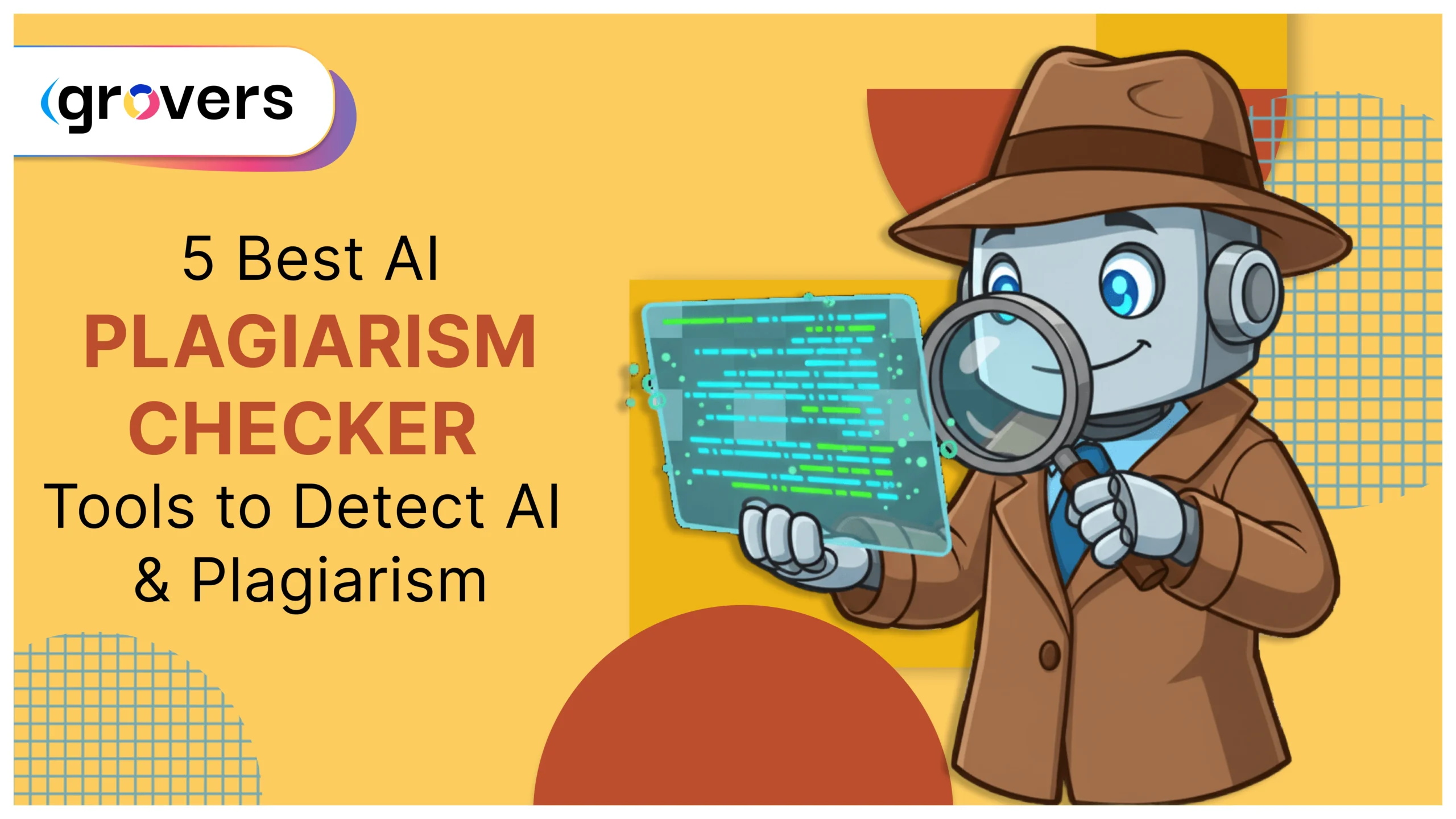In 2025, the digital content environment is radically different. The producers, teachers, and corporations are currently confronted with two challenges: not only to spot conventional plagiarism but also to identify text produced by AI. This comprehensive guide explores the most effective AI plagiarism checker tools that excel at both tasks.
Plagiarism detection today is so much better than the simple copy-paste application. The modern high-tech tools integrate traditional plagiarism detection with the latest machine learning algorithms to identify AI-generated texts on such widespread apps as ChatGPT, Claude, and Gemini.
Why Traditional Plagiarism Checkers Fall Short
The old plagiarism detectors were made in a more simplistic era. They are good at matching and paraphrasing the content they have already read, but are at a loss when it comes to AI-created content that cannot be found anywhere on the Internet.
This difficulty becomes apparent when you take into account the fact that AI tools generate original text that passes standard plagiarism verification. This content seems original to typical checkers since it was not plagiarized. Nevertheless, it is lacking in human creativity and is often filled with limited patterns that can be detected by special AI detectors.
According to surveys on academic integrity released recently, the number of suspicious AI submissions has increased by 400% in educational institutions since 2023. Growth of AI-based writing aids is also connected to this wave and another sign of the importance of two-purpose detection systems.
The Top 5 AI Plagiarism Checker Tools
There are many AI tools available, but let us look at the best 5 AI plagiarism checking tools:
1. Winston AI
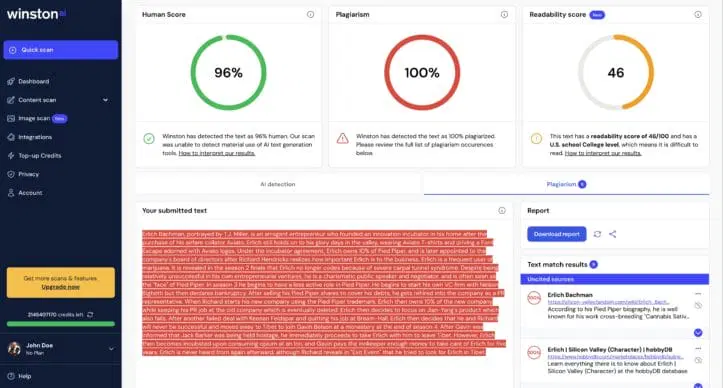
Winston AI stands out as one of the most accurate AI detectors with 99.98% accuracy in detecting AI-generated text, particularly excelling at identifying content from ChatGPT and GPT-4 models. This tool combines robust plagiarism detection with cutting-edge AI identification capabilities.
Key Features:
- Advanced AI detection with detailed confidence scores
- Comprehensive plagiarism checking across billions of sources
- Batch processing for multiple documents
- Integration with popular learning management systems
- Detailed reporting with highlighted suspicious sections
Pricing: Plans start at $12 per month, with a free trial available for new users.
Best For: Educational institutions, content agencies, and professional writers who need reliable dual detection capabilities.
Winston AI particularly shines in academic environments where both traditional plagiarism and AI-generated submissions pose challenges. The platform provides clear visual indicators and detailed explanations for each detection, making it easy for educators to understand and act on results.
2. Originality.AI
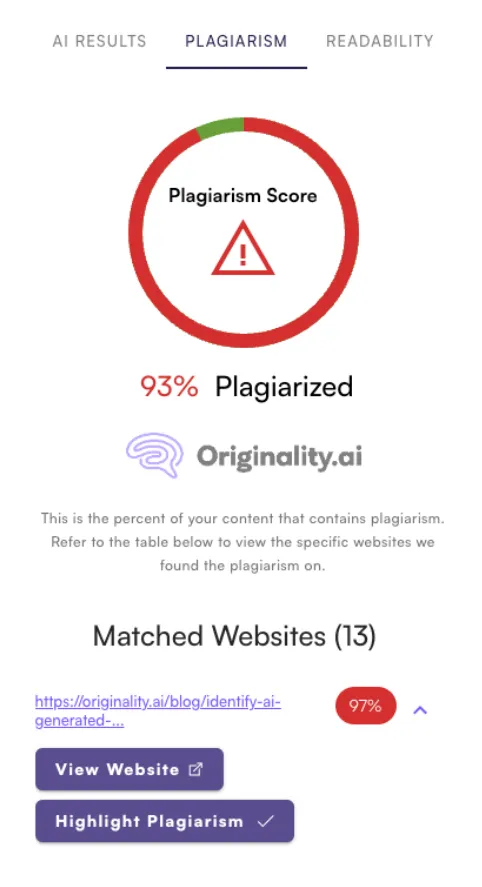
Originality.ai ranks among the most accurate AI detectors in 2025, providing in-depth analysis and highlighting AI-generated sections alongside traditional plagiarism detection. This tool was specifically designed for content marketing teams and publishing companies.
Key Features:
- Real-time scanning as you type
- Team collaboration tools with shared workspaces
- Chrome extension for instant checking
- Comprehensive content history tracking
- Advanced paraphrasing detection
Pricing: Credit-based system starting at $14.95 for 100 credits, with unlimited plans available.
Best For: Content marketing agencies, publishers, and businesses that produce high volumes of written material.
The platform excels at detecting sophisticated paraphrasing and AI-assisted writing that other tools might miss. Content teams particularly appreciate the collaborative features that allow multiple team members to review and verify content before publication.
3. Copyleaks
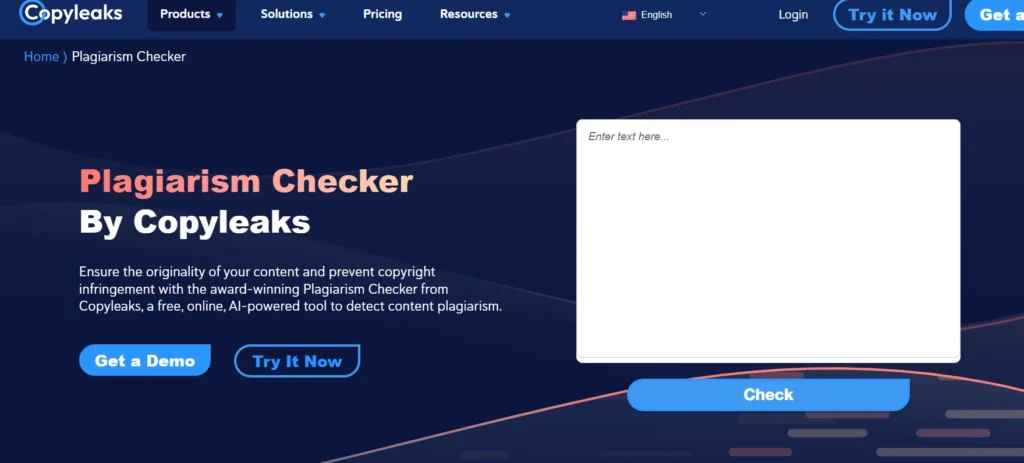
Copyleaks operates as an AI-based platform used by millions worldwide to ensure text authenticity and protect intellectual property. This enterprise-grade solution offers comprehensive protection against both traditional plagiarism and AI-generated content.
Key Features:
- Multi-language support for global teams
- API integration for seamless workflow automation
- Custom model training for specific industries
- Advanced similarity detection algorithms
- Enterprise-grade security and compliance
Pricing: Custom enterprise pricing with free trials available for evaluation.
Best For: Large organizations, multinational corporations, and educational institutions requiring scalable solutions.
Copyleaks distinguishes itself through extensive customization options and enterprise-level support. The platform can be trained on specific industry content, making it particularly effective for specialized fields like medical writing or legal documentation.
4. Turnitin
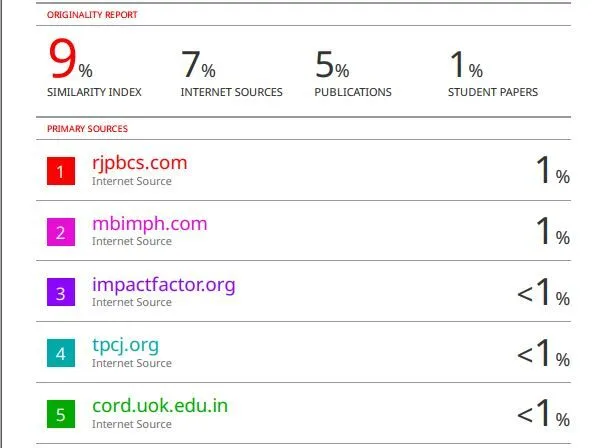
Turnitin achieved very high accuracy in multiple evaluations and continues to evolve alongside AI text generators like ChatGPT. While traditionally focused on academic plagiarism, Turnitin has successfully integrated AI detection capabilities.
Key Features:
- Extensive academic database with over 70 billion web pages
- Seamless LMS integration across major platforms
- Detailed similarity reports with source identification
- AI writing detection with confidence indicators
- Student feedback tools for educational improvement
Pricing: Institutional licensing with pricing based on student enrollment numbers.
Best For: Universities, colleges, and K-12 schools with established academic integrity programs.
Turnitin remains the gold standard in academic settings due to its comprehensive database and institutional integration capabilities. The platform’s recent AI detection updates have maintained its relevance in the evolving educational landscape.
5. GPTZero
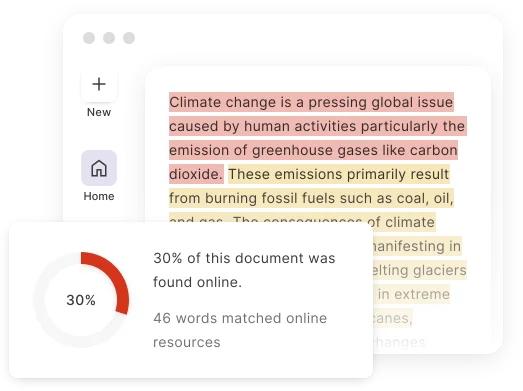
GPTZero claims 99% accuracy rates across diverse datasets and has been independently reviewed by AI labs at top institutions. This tool offers a user-friendly approach to AI detection with strong free tier options.
Key Features:
- Free tier with generous usage limits
- Batch document processing
- Writing report generation
- Chrome extension for browser-based Checking
- Simple, intuitive interface design
Pricing: Free tier available, with premium plans starting at $10 per month.
Best For: Individual educators, freelance writers, and small businesses with limited budgets.
GPTZero’s strength lies in its accessibility and ease of use. The platform democratises AI detection by offering powerful capabilities at affordable price points, making it an excellent choice for smaller organizations or individual users.
How to Choose the Right AI Plagiarism Checker
Selecting the appropriate tool depends on your specific needs and use case. Consider these critical factors when making your decision:
- Volume and Frequency: High-volume users benefit from unlimited scanning plans, while occasional users might prefer credit-based systems or free tiers.
- Integration Requirements: Educational institutions should prioritize LMS compatibility, while content agencies might need API access for workflow automation.
- Accuracy Needs: Academic and legal applications require the highest accuracy levels, justifying premium tool investments.
- Budget Constraints: Free and low-cost options can effectively serve individual users and small organizations without compromising essential functionality.
- Team Collaboration: Multi-user environments benefit from tools offering shared workspaces, role-based permissions, and collaborative review features.
Best Practices for Effective Detection
Maximizing the effectiveness of your chosen AI plagiarism checker requires strategic implementation. Such practices maximize the results and reduce false positives or negatives.
- Multi-Tool Checking: suspicious contents are checked with a pool of detection tools to verify the results and minimize the error margin.
- Context Consideration: Review the results of the detection in the wider context of the usually applied style by the writer and the assignment.
- Updating regularly: Updating your detection tools is one of the things you should do to stay relevant in the face of an ever-advancing AI writing technology.
- Training and Education: Conduct a massive training to users on how to utilise the tools and how to interpret the results.
- Good Policies: Have explicit rules about the acceptable level of AI help and the penalties for breaking them.
The Future of AI and Plagiarism Detection
Detection is an area that sees continuous development as AI writing tools become smarter. Recent developments indicate that the rate of false positives will reduce as the detection error decreases with more training data and the best-defined algorithms.
New technologies, such as blockchain verification and digital content fingerprinting, can soon offer further authenticity checking levels. Such developments are likely to be seamlessly integrated with the already existing AI plagiarism checker platforms.
Schools are revising their academic integrity policies to apply AI assistance in a proper way. Many schools are no longer advocating blanket bans; instead, they generally encourage the adoption of AI without reducing the originality threshold.
The professional content sector also adjusts through disclosure rules and setting certain limits on the use of AI to support published content..
Frequently Asked Questions
How accurate are AI plagiarism checkers in 2025?
The best AI plagiarism checkers now achieve 95-99% accuracy rates for detecting popular AI models like ChatGPT and GPT-4. Accuracy does vary, however, depending on the AI model applied, and the content being analyzed.
Can these tools detect plagiarism and AI content simultaneously?
Yes, modern AI plagiarism checkers scan for both traditional copied content and AI-generated text in a single analysis. Such a two-in-one feature will make the use and detection process easier and will not require the use of various tools.
Are free AI plagiarism checkers reliable enough for academic use?
Free solutions will be suitable for basic detection needs, whereas school and college institutions tend to require the more advanced features and reporting of higher-priced solutions. Free versions can be used effectively in personal verification, but can also be restrictive when applied to a company.
How do AI detectors handle paraphrased AI content?
Advanced AI detectors recognize writing samples, sentence structure, and linguistic features that remain after paraphrasing. Even with AI-generated content that has been greatly edited or reworded, the most advanced tools can spot this new content.
What should I do if I get a false positive result?
Always read flagged material manually and consider using a second tool to validate it. Context is important – technical writing or formulaic content can give a false positive. Where there is uncertainty, examine the specific spots identified by the detector and apply judgement to the results.
